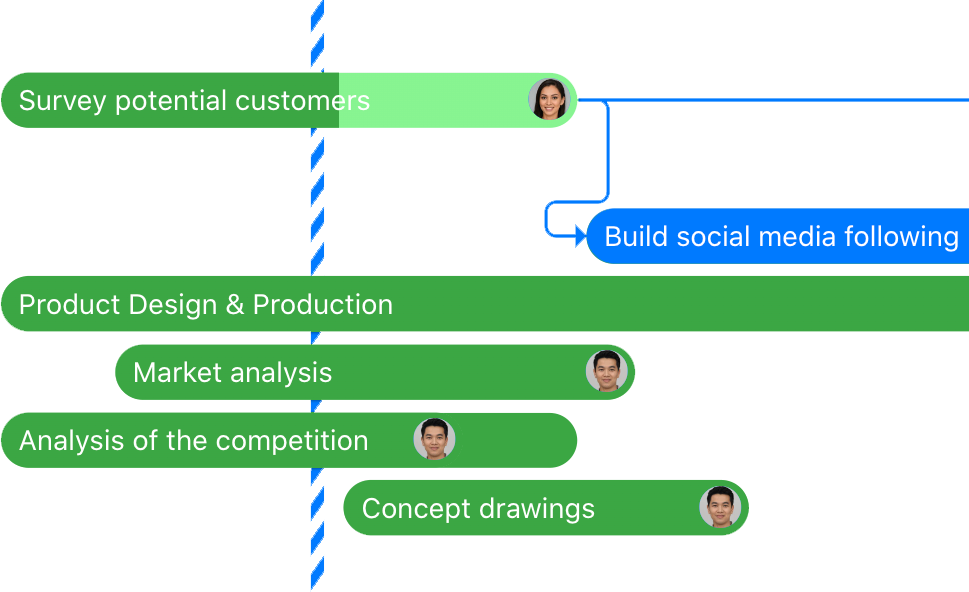
Project scope statements sometimes get confused with the scope of work and project scope management plan. While similar, there are key differences.
The scope of work defines the work to be done, including deliverables and timelines. It is one part of the project scope statement. A project scope management plan develops from the project scope statement and details the management process throughout the project life cycle.
So, what is a project scope statement? A project scope statement is a document that defines a project’s scope of work. It also describes the project objectives, requirements, timelines, deliverables, etc. It ensures all project stakeholders are on the same page and reduces redundancies, reworks, and scope creep. It also allows project managers to develop an effective project plan.
In this article, we’ll show you how you can create an effective project scope statement for large and complex projects.
Here are some of the things you’ll learn:
- An in-depth breakdown of the 6 key steps to creating a project scope statement (with examples)
- Some extra tips for making your scope statement as effective as possible
1. Define the Purpose of a Project
Project teams need to know the project’s purpose to get a clear picture of what the project is supposed to accomplish. The purpose of any project should be defined by its business goals and objectives.
For example, an online business looking to penetrate a new market where target customers transact using mobile money payment wants to have this option ready a launch.
With an understanding of the business goals, the engineering project management team, for example, can define specific objectives like integrating existing market solutions, identifying relevant team members, scheduling project deliverables, managing the budget, etc.
When writing your project objectives, be sure they follow the SMART goal-setting best practice. They should be specific, measurable, achievable, relevant, and time-bound.
So, instead of broadly stating that system tests will be conducted over three days, say: customer service teams will test the user experience of the payment process on October 10, 13 & 14, 2022.
2. Gather Project Requirements
The second step to crafting your project scope statement is collecting project requirements. Requirements are functional or technical elements that a product must satisfy.
For example, you may have a feature request that a mobile scanning app should scan documents with the camera function, convert images to PDF, and send the scan via email.
There are five categories of project requirements:
- Business requirements,
- Stakeholder requirements,
- Product requirements,
- Transition requirements,
- Quality requirements.
To meet your project goals, you must collect requirements from investors, business function teams, product development, IT support, testers, and customers.
3. Develop a Project Scope Statement
In this step, you will describe all the work needed to complete the project. The project scope statement includes the following elements:
- Product scope: a detailed breakdown of the product
- Product acceptance criteria: customer’s expectations and standards
- Project deliverables: products and accompanying supplements like user manuals
- Project exclusions: description of components outside the project’s scope
- Project constraints: internal and external factors that may affect the project
- Milestones: critical stages of the project’s timeline.
- Sign-off: Signature section showing the stakeholder’s support
The statement describes the scope, including exclusions, project deliverables, acceptance criteria, constraints, and project assumptions.
The length of your scope statement will depend on the complexity of your project. Whether paragraphed or bullet-pointed, it must outline the parameters of the project so that the stakeholders are aware of what the project is and isn’t (project exclusions).
Project exclusions draw the boundaries around the project, explicitly stating what isn’t included in the project. Exclusions reduce instances of scope creep that cause delays and additional costs.
For example, the sales manager might assume training comes with the new relationship management system. Stating that system training is part of the project avoids a situation where the new deliverable is added toward the end of the project.
4. Identify Project Deliverables and Success Criteria
In this section of the project scope statement, you will summarize the key deliverables, giving stakeholders an overview of what to expect from the final product. For instance, a key deliverable for a remote call center platform could be to record cell phone calls.
You will need to work with project partners to construct a comprehensive list. Deliverables may include the product, instruction manuals, marketing materials, and press releases.
In conjunction with the project deliverables, you will also want to indicate specific dates when stakeholders can expect each deliverable to be completed. These milestones help project managers monitor the project’s progress and make any necessary provisions or adjustments.
Hitting important milestones is one way to measure project success. Another criterium is cost. If you can complete the project on time and within budget, you can call it a success. However, you don’t want to compromise quality for the sake of meeting deadlines and the bottom line. If the project benefits from an extra week or additional funds, prioritize that.

Plan and carry out your project scope statement with Zenkit Projects
5. Determine Project Constraints
Every project has risks and limitations. Project managers have to contend with three main project constraints. They are scope, time, and cost, also known as the project management triangle.
These constraints are interconnected so that one change affects the other. For instance, increasing the project scope will likely increase the timeline and budget. Shortening the time to market may decrease costs, but it will also diminish the project’s scope.
These three aren’t the only constraints you may come across.
This IVR project scope statement lists sales personnel’s attitudes to the project as a project constraint.
Product quality is another constraint. Let’s say a requirement for a mobile game is the coding language JavaScript. If you don’t have a developer that knows JavaScript, you won’t be able to match that requirement until you find one.
The business environment is another common project restraint. Business environment refers to internal and external factors that influence the operations of organizations. They include company culture, consumer trends, the kind of technology available, and many others. For example, new legislation on customer data may limit your website’s ability to track and collect particular types of data.
Project constraints manage the expectations of project partners and give project teams limitations to work within.
6. Get Stakeholders’ Approval
The final step in crafting a project scope document is including a stakeholder sign-off section. Collecting requirements and major deliverables from project partners aren’t enough. You need confirmation that everyone understands and is on board with the project. It will reduce frustration and costly overruns down the line.
You want stakeholders’ approval to prevent unnecessary changes once the project has started. That doesn’t mean some changes won’t be made. Some changes are unpredictable and need to be accounted for. For instance, when a supplier changes prices or your user experience designer quits, disrupting the project timeline.
So, while you want to minimize scope creep as much as possible, you also don’t want to run the risk of ignoring beneficial improvements. In that case, you may consider including a change control process to monitor project scope creep and manage changes.
In addition to describing changes, users indicate whether the change will affect the project budget, schedule, or other resources.
Change requests should go through a stakeholder approval process to determine if the change is warranted.
Bonus Tips for Writing an Effective Project Scope Statement
You’ve learned how to write a project scope statement. Here are some best practices to follow for an accurate and reliable statement:
- Ensure your scope statement is super comprehensive. All key questions on the project timeline, objectives, scope, and deliverables should be covered.
- Keep your statement free of technical jargon. Use simple language that all stakeholders can understand.
- Keep the project scope statement concise. Cover only the necessary information and leave the rest for the project plan.
You should also encourage team participation while creating the project scope statement to ensure they’re on board with it.
Final Thoughts
Project management is complicated and requires careful planning. Before you create a project management plan, you need a detailed scope statement. Project scope statements describe what your project entails. It includes business objectives, deliverables, budgets, and constraints, so the project teams are all on the same page. It also outlines what isn’t included in your project (exclusions) so that last-minute additions don’t cause delays and overruns.
Hence, it is a great tool to ensure your team meet project deliverables in a timely and cost-effective way.
We highlighted six ways to create a successful project scope statement. The first step is defining the purpose of the project. Projects don’t exist for their own sake; they are developed to meet specific business needs. Once you know the business goals, you can start collecting requirements from key stakeholders.
With the objectives and requirements in hand, you can begin crafting the scope statement that should include project deliverables, exclusions, and constraints. Finally, complete the scope statement with a stakeholder signature section. It ensures all parties are on board with the project and guards against unnecessary additions and changes.
You can’t always predict the outcomes of your project, but you can plan to ensure you achieve the best possible result. You do this with the six steps outlined in this article.
About the Author: Tam Pham is the Business Operations Manager at Tara AI. Tara is a product delivery platform designed to help engineering teams gain development insights, improve performance, and deliver with predictability
FREE 20 MIN. CONSULTATION WITH A PROJECT MANAGEMENT EXPERT
Wanna see how to simplify your workflow with Zenkit in less than a day?
Book a Live Demo




Leave a Reply